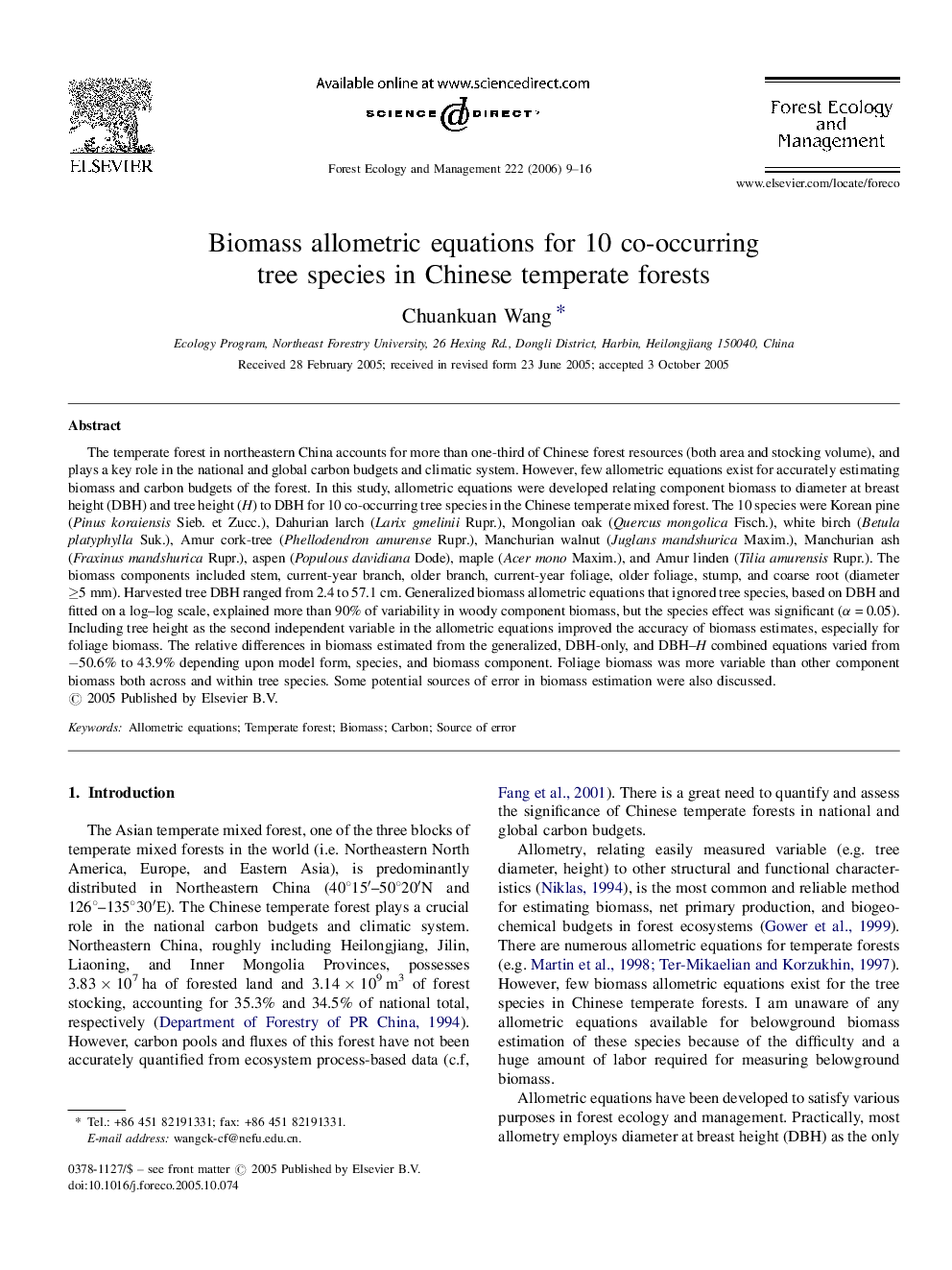| Article ID | Journal | Published Year | Pages | File Type |
|---|---|---|---|---|
| 90693 | Forest Ecology and Management | 2006 | 8 Pages |
The temperate forest in northeastern China accounts for more than one-third of Chinese forest resources (both area and stocking volume), and plays a key role in the national and global carbon budgets and climatic system. However, few allometric equations exist for accurately estimating biomass and carbon budgets of the forest. In this study, allometric equations were developed relating component biomass to diameter at breast height (DBH) and tree height (H) to DBH for 10 co-occurring tree species in the Chinese temperate mixed forest. The 10 species were Korean pine (Pinus koraiensis Sieb. et Zucc.), Dahurian larch (Larix gmelinii Rupr.), Mongolian oak (Quercus mongolica Fisch.), white birch (Betula platyphylla Suk.), Amur cork-tree (Phellodendron amurense Rupr.), Manchurian walnut (Juglans mandshurica Maxim.), Manchurian ash (Fraxinus mandshurica Rupr.), aspen (Populous davidiana Dode), maple (Acer mono Maxim.), and Amur linden (Tilia amurensis Rupr.). The biomass components included stem, current-year branch, older branch, current-year foliage, older foliage, stump, and coarse root (diameter ≥5 mm). Harvested tree DBH ranged from 2.4 to 57.1 cm. Generalized biomass allometric equations that ignored tree species, based on DBH and fitted on a log–log scale, explained more than 90% of variability in woody component biomass, but the species effect was significant (α = 0.05). Including tree height as the second independent variable in the allometric equations improved the accuracy of biomass estimates, especially for foliage biomass. The relative differences in biomass estimated from the generalized, DBH-only, and DBH–H combined equations varied from −50.6% to 43.9% depending upon model form, species, and biomass component. Foliage biomass was more variable than other component biomass both across and within tree species. Some potential sources of error in biomass estimation were also discussed.
